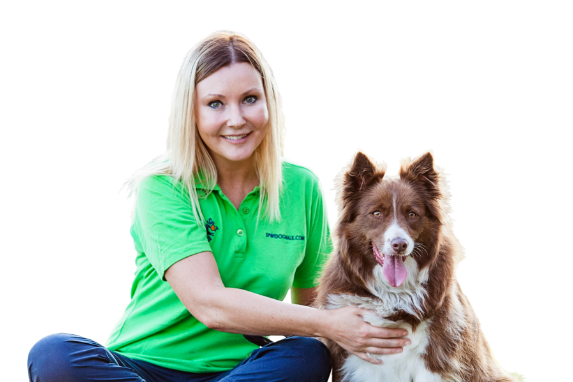Establishing a Calm Pre-walk Routine for your Dog
By Anne-Marie George
As we know not all humans approach exercise with the same lycra-clad enthusiasm. However, in the canine world it doesn’t seem to matter if you’re lovingly rotund or sporty-spice sleek; a handbag sized breed or comparable to a Shetland pony, young or old, glancing that moment their family member reaches for the walking restraint and watching those prison gates open is like mixing a rodeo bull with an atomic explosion. The anticipation, the excitement, the relative freedom, no wonder so many dogs literally burst with ‘undesirable behaviours’, practically propelling their walk mate through the gate, when they sense it’s walk-time. But this need not be the case according to dog trainers and behavioural specialists. In this article I will continue our series on transitioning our dogs from wild, free spirits into well-mannered walking companions, this week examining the techniques for curtailing our ‘enthusiastic’ dogs.
Time and time again I’ve read about the importance of establishing a pecking order in the canine inclusive family where the human, not the dog, is the pack leader. It is certainly no different when it comes to the pre-walk routine. It is imperative that the human sets the agenda and leads by example. Thus, if you desire a calm relaxed dog then you must approach the walking apparatus in a composed manner. No more tomfoolery, boisterous play and petting, racing around and stirring up excitability because our dogs, who have a greater capacity to maintain that intensity, don’t understand when we’ve had enough and require cooperation and serenity.
Having said that, example alone won’t curtail all pre-walk wildness. Desensitising our dogs to the various elements associated with a walk will also help. Take it one step at a time. Firstly, in between walks, take out your walking restraint, then, without putting it on your dog, put it back in its place. Do this several times a day for at least a week or until your dog starts to disassociate accessing the restraint with going for a walk.
Next place the restraint on the dog, then remove it and put it away. Again practice this several times for as long as it takes your dog to become desensitized to the application of the restraint. As your dog becomes passive to an aspect of the walk routine introduce the next element. For example, grab the restraint, fix it, reach for the poo bags, then put the bags back, remove the restraint and put it away. After this introduce grabbing your keys or a water bottle or whatever else you do before venturing out for your walk, always reversing the process without going for a walk, several times a day and for at least a week. However, in amongst all the practice, it is important to still go for a walk, or however many walks you’d ordinarily do each day, as our dogs need exercise.
Coupled with desensitizing our dogs to the walking routine is the need for positive reinforcement. Yelling, hitting and, as some suggest, ignoring our dog’s unruly pre-walk behavior is counterproductive to rectifying the issue. Raising our tone may inadvertently enliven the dog even more, physical punishment is confusing and could hurt them and ignoring may result in a home that resembles a demolition yard, with very cranky neighbours. Rather, remain calm and praise your dog for desirable and obedient behavior, reinforcing that attention, play and perhaps even treats come with certain conduct. Inclusion in a dog training school or hiring a behavior specialist will certainly benefit our ability to communicate effectively with our dogs.
Like all training starting young is best but don’t despair if your dog has been running amuck for years. Perhaps a specialist trainer may initially be required but commitment, repetition, consistency and positive reinforcement will be the keys to success, oh and a lot of patience.
References
ASPCA, Teaching Your Dog Not to Jump on People, http://www.aspca.org, 16th August 2013.
Balanced Dog, Pack Leader, 2012, A Calm Start Leads to a Calm Walk with Your Dog, http://balanceddogs.com/wordpress/?p=108, 25th August 2013.
Dogmantics Dog Training, Larlham, E., The Problem with Just Ignoring Unwanted Behaviours, http://dogmantics.com/2012/11/07/the-problem-with-just-ignoring-unwanted-behaviors/, 25th August 2013.



